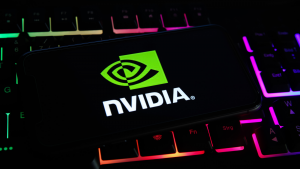Undervalued semiconductor stocks were on the move before the bear market took over.
First, it came for the most speculative and high-growth stocks in early to mid-2021, while many quality names were still hitting new highs in the fourth quarter.
Eventually, weakness pervaded the market and the bears came for the rest. While it left investors with plenty of losses, a handful of undervalued semiconductor stocks that remain attractive are still set for growth.
To be sure, value opportunities aren’t just with semiconductor stocks. However, this group seems to have been unfairly sold off from the highs. Many of the top holdings in this group have fallen by 50% or more.
Despite the halving in their stock price, earnings and revenue estimates have held firm. In some cases, they have even grown so far during the year. When estimates stay flat or rise and the stock price declines, the valuation plummets. When that happens, we get undervalued semiconductor stocks.
| TSM | Taiwan Semiconductor | $86.56 |
| NVDA | Nvidia | $178.07 |
| AMD | Advanced Micro Devices | $89.43 |
Taiwan Semiconductor (TSM)

Earnings are the long-term driver for stocks, but that doesn’t seem to be the short-term case — even with undervalued semiconductor stocks. On July 14, Taiwan Semiconductor (NYSE:TSM) delivered solid second-quarter results. Thus far, the market doesn’t seem to care as shares remain 43% below the 52-week high.
The company reported a top- and bottom-line beat and provided an above-consensus outlook for the third quarter. What more do investors need? With Taiwan Semiconductor, they’re overlooking a winner.
Analysts expect 28% revenue growth this year and 42% earnings growth. At its current price, shares trade at just under 14 times this year’s earnings expectations. Even better, the company has better profit margins than both other companies on this list and all of FAANG and Microsoft (NASDAQ:MSFT).
That fact right there should make Taiwan Semi worth more than 14 times earnings. By comparison, Microsoft and Taiwan Semi have similar margin profiles. Not that that’s the only consideration here — and admittedly, Microsoft is a total juggernaut — but it trades at ~27 times earnings.
Nvidia (NVDA)

Taiwan Semi isn’t the only name on our list of undervalued semiconductor stocks. There’s also Nvidia (NASDAQ:NVDA). This company is considered by many to be a best-in-breed tech stock and it powers every meaningful secular growth trend in the technology sector.
As such, it has its hands in a number of end markets, including the cloud, datacenters, artificial intelligence and more.
Like Taiwan Semi, Nvidia also has strong margins. The company generates 65% gross margin and 32% net margin. While it can’t quite edge out Taiwan Semi or Microsoft, the company’s net margins are also better than all of FAANG.
Not to mention, Nvidia stock now trades at just under 27 times earnings. While that’s more expensive than the first name on this list, it’s the lowest valuation NVDA stock has traded at in quite some time.
Advanced Micro Devices (AMD)

Speaking of a multi-year low in valuation, Advanced Micro Devices (NASDAQ:AMD) now trades at just 17 times this year’s earnings expectations. That’s the lowest valuation we’ve seen in the last five years. Despite that, the company continues to deliver.
Analysts expect a big pop in revenue and earnings this year — 60% and 57%, respectively — however that’s also tied to the company’s acquisition of Xilinx. AMD made a savvy acquisition, essentially buying up a firm that has free cash flow of $1 billion or more per year (and has consistently done so for the last several years).
Analysts expect roughly 20% earnings growth in 2024 and 2025, after roughly 12.5% growth next year. On the revenue front, estimates sit between 13% and 15% through 2025 (after this year).
Even better? Consensus estimates have been rising this year, despite the stock price falling 56.5% from peak to trough.
On the date of publication, Bret Kenwell held a long position in NVDA. The opinions expressed in this article are those of the writer, subject to the InvestorPlace.com Publishing Guidelines.